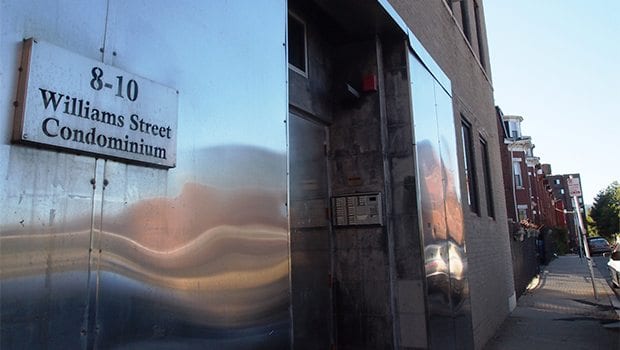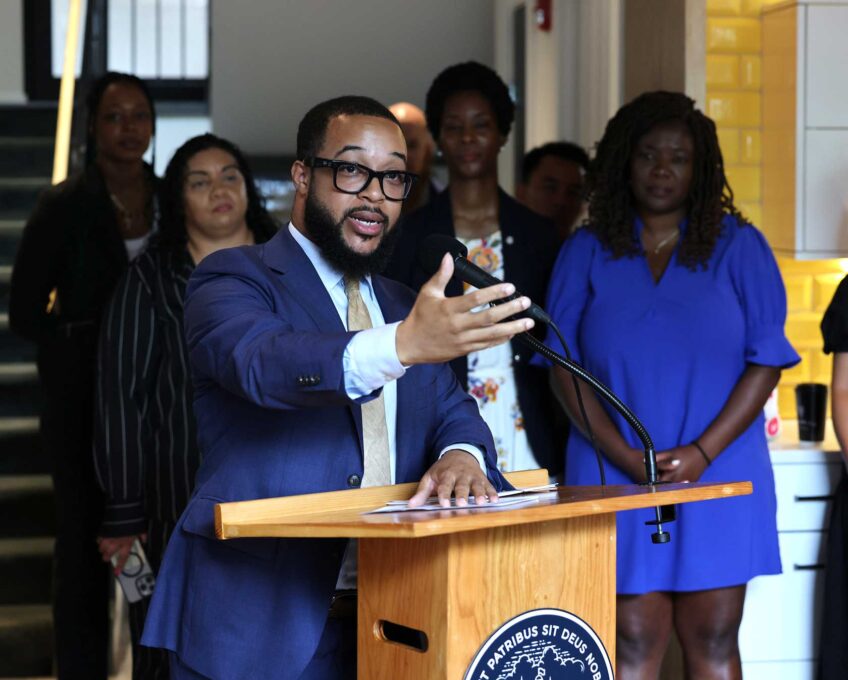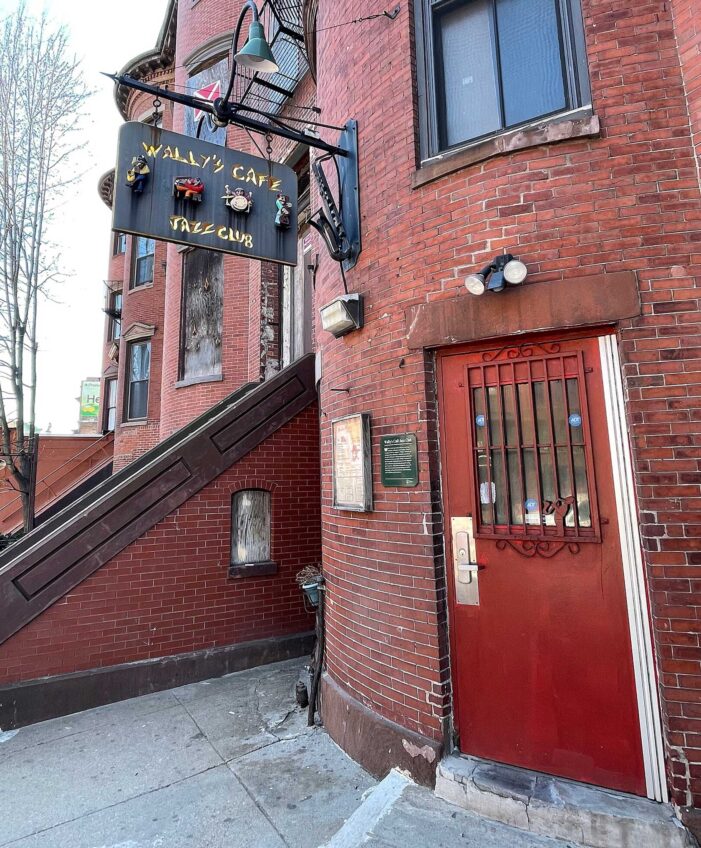
There are few hard statistics to flesh out the existence of gentrification in Roxbury. Median sales prices in the neighborhood have been driven down by the high number of foreclosure sales, and nobody’s tracking displacement of renters.
Perhaps the clearest indication of change in Roxbury is in the 2010 Census, which counted the white population in the historically black neighborhood nearly double the population in the 2000 count, growing from 5.5 percent to 9.6 percent.
While the population in Roxbury grew from 49,795 to 56,827, the black percentage of the population declined from 62 percent to 52 percent.
And that was before the neighborhood’s housing market recovered from the 2008 real estate market crash. Now, with single family homes selling for more than $500,000 and a red-hot rental market, there’s a general consensus among civic leaders, real estate professionals and affordable housing activists that Roxbury is at the very least in the early stages of gentrification.
That conclusion was bolstered by a study released earlier this year by the First National Bank of Cleveland that identified Boston as the fastest-gentrifying city in the country and identified three census tract areas in Roxbury as at-risk for gentrification: a tract running from Moreland Street to the Newmarket Business District, a cluster of three tracts along the Orange line from Roxbury Crossing to Jackson Square and the Grove Hall area between Quincy Street, Humboldt Avenue, Blue Hill Avenue and Seaver Street.
“If the market is left to itself and developers are left to their own devices, Roxbury could turn into the South End,” said Nuestra Comunidad Community Development Corporation Executive Director David Price. “Roxbury is in much better shape than the South End was 30 years ago.”
The movement of black renters and owners from Roxbury is a classic case of gentrification, according to Price.
“The essence of gentrification is displacement,” he said. “It’s the loss of long-term residents.”
The black community in Boston originally grew on the north side of Beacon Hill in the 18th and 19th century. Beginning in the early 20th century, blacks began moving into the South End. There, many blacks bought brick row houses, maintaining many as multi-family homes.
In the 1930s, blacks began moving into Roxbury. Over the next four decades, the center of the city’s black population shifted from the South End to Roxbury, spreading out into parts of Dorchester and Mattapan. By the 1970s, Roxbury’s Jewish, Italian and Irish residents had fled to the suburbs, leaving Roxbury a majority-black neighborhood.
As the South End continued to gentrify through the ’80s and ’90s, Roxbury remained fairly stable, with reliably low real estate values and a large supply of affordable units. Currently, 45 percent of Roxbury residents have rental subsidies — many, but not all, in large subsidized developments like Warren Gardens, Academy Homes and Orchard Gardens.
Although the high percentage of subsidized rents in Roxbury may seem like a hedge against gentrification, currently 41 percent of units in the South End are subsidized, yet that neighborhood is widely considered gentrified.
Price notes that gentrification could happen much more quickly in Roxbury. Of the neighborhood’s 21,522 residences, just 4,993 were owner-occupied in 2010. With a high percentage of fixed-income seniors living in Roxbury, those units could turn over quickly.
“The real question is can the 4,900 people who own continue to own in Roxbury,” said longtime Roxbury resident Dan Richardson. “There are not many older folks who want to hang in and do what it takes to stay in a house that’s too big.”
Richardson’s Humboldt Avenue home is not particularly close to a rapid transit line and is relatively far from the city’s hospitals and colleges. Yet it is one of the three Roxbury areas identified as ripe for gentrification in the First National Bank of Cleveland study. Its stock of well-maintained stately Victorian-era homes has attracted a smattering of hipsters, young urban professionals and speculators.
While the average African American family with a family income between $60,000 and $90,000 can afford a home in the $300,000 range, single-family homes throughout Roxbury are now selling for $500,000.
“No one who lives here can buy a house at that price,” notes Rodney Singleton, who is active in Roxbury development issues. “That’s why we have a problem with gentrification in Roxbury.”
The high cost of housing in Roxbury is not immediately reflected on real estate tracking websites. On Trulia, of the ten single-family homes listed in the 02119 Roxbury zip code, six were in foreclosure and one was a deed restricted affordable home.
Housing activists say many of the homes in foreclosure are being snapped up by speculators who are flipping them, earning handsome profits.
“There are always going to be people looking to get something for nothing, and real estate is the easiest way to do that,” Richardson commented.
Along with home sale prices, rents in Roxbury are also on the rise. An 850-square-foot, three-bedroom apartment on Williams Street in Dudley Square is listed for $2,950. A two-bedroom apartment on Washington Street in Egleston Square is listed for $1,950.
“I have a client who has a Section 8 voucher and wants to live in Roxbury,” said real estate broker Kensley Dimmott. “I haven’t found any two bedrooms for $1,400 yet. You can still find them, but it’s a lot tougher. There’s not a lot of inventory. And when you have inventory, landlords can get $2,000 for a two bedroom.”
While there are no reliable statistics, Roxbury residents say they’re seeing many longtime tenants forced out of the neighborhood by the rising rents.
“People who are not getting a subsidy, they better have a good paying job,” says retired housing activist Joan Miller, who lives in Academy Homes. “Or they need to have two jobs. Gentrification is happening.”
New housing strategies
While there is near-universal agreement that gentrification is happening in Boston, there’s little consensus on how best to respond. Many in Roxbury fit into one of two camps — those who think the neighborhood has too much affordable housing, and those who think Roxbury needs more.
Price occupies a narrow middle ground, calling for subsidies for moderate-income homebuyers earning between $60,000 and $90,000 a year. Those buyers can afford housing in the $300,000 – $350,000 range, Price says. But land acquisition costs often make it impossible to build housing units for less than $400,000.
Among the ideas Price is floating are public subsidies for homebuyers in the form of $50,000 loans.
“The city could make a soft loan that doesn’t have to be repaid until the house is re-sold,” he said. “If a developer is selling a home for $400,000, it could write down the loan to $350,000.
Price also advocates for public land to be made available for free to developers who agree to build moderate-income housing. In addition to the large swaths of publicly-owned land on Melnea Cass Boulevard and Columbus Avenue in Lower Roxbury, there are dozens of vacant city-owned parcels on and around Blue Hill Avenue.
“There’s at least a million square feet of publicly-owned land,” he said. “And there are developers who specialize in building on small parcels.”
Both Price and Singleton have advocated a housing strategy for Roxbury that prioritizes a balance of market, affordable and moderate-income housing. In crafting a request for proposals for the Bartlett Yard project on Washington Street, Singleton and other project review committee members called for each of the three income levels to occupy a third of all units developed at Bartlett, a commitment Price agreed to adhere to.
That same 1/3, 1/3, 1/3 formula has become somewhat of a mantra among housing activists who weighed in on the Walsh administration’s transition team meetings. The Walsh administration is expected to release its plan for housing and development in Boston later this month. While Walsh administration officials have not leaked any details, housing activists are eagerly awaiting the plan.
“In Roxbury, it will make all the difference,” Price said.







